Dryads
Dryads are mythological tree spirits that live in the forest and take care of the trees, animals and other living things in their forest. They will defend their forest from threats, intruders and destroyers of nature.
Dryads come in many forms. In my paintings I portray various types of trees as dryads.
All dryad paintings are available as prints!Meet my dryads!
Embla (Dutch Elm Disease)
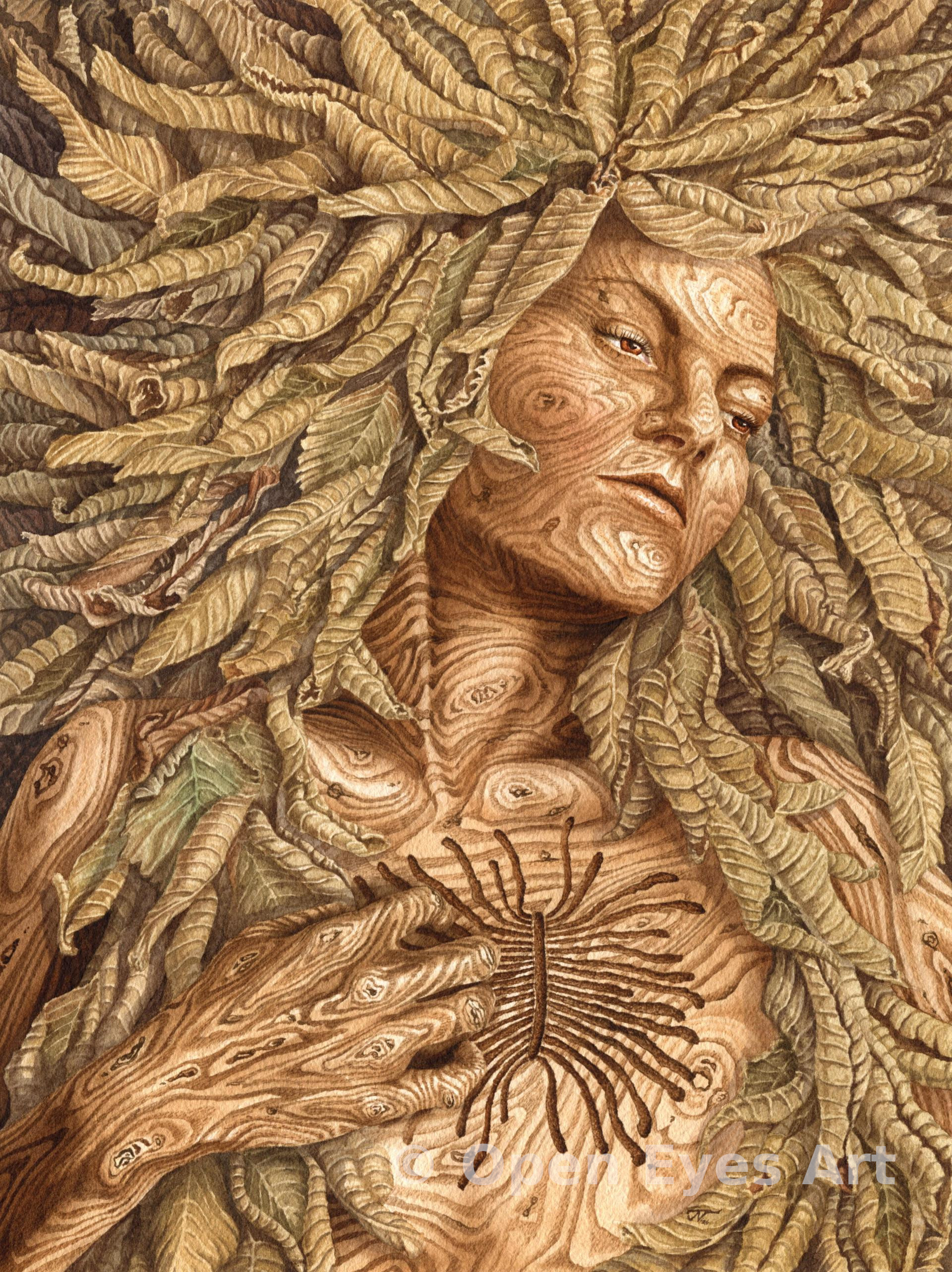
Dutch Elm Disease is caused by a fungus carried by a beetle. The fungus then attacks the elm tree and cuts off the tree's water supply. The tree withers and dies of thirst within the year.
There is no cure, and preventive treatment of healthy trees is expensive and time-consuming. The sad thing is that this disease has actually been introduced to Europe twice, by import of wood or untreated wooden crates. The first time we were lucky - a virus attacked the fungus and the disease was kept in check. The second time, a different and more resilient version of the fungus was imported and there's no virus to limit its spread. At this point today, most elms in Europe are affected and are quickly dying.
Technically, the fungus is not eradicating elms as a species, but it kills elms older than 20 years - a very young age for an elm. We are essentially losing all full-grown elms. As there is no cure, we can only hope for more resistant variants of elm to develop and establish themselves.
And we should learn from our mistakes. Our global trade system carries many dangers. Invasive species are one such danger.
Watercolour painting, ca. 27x36cm, 2024
For sale - price on request
Askr (Ash dieback)
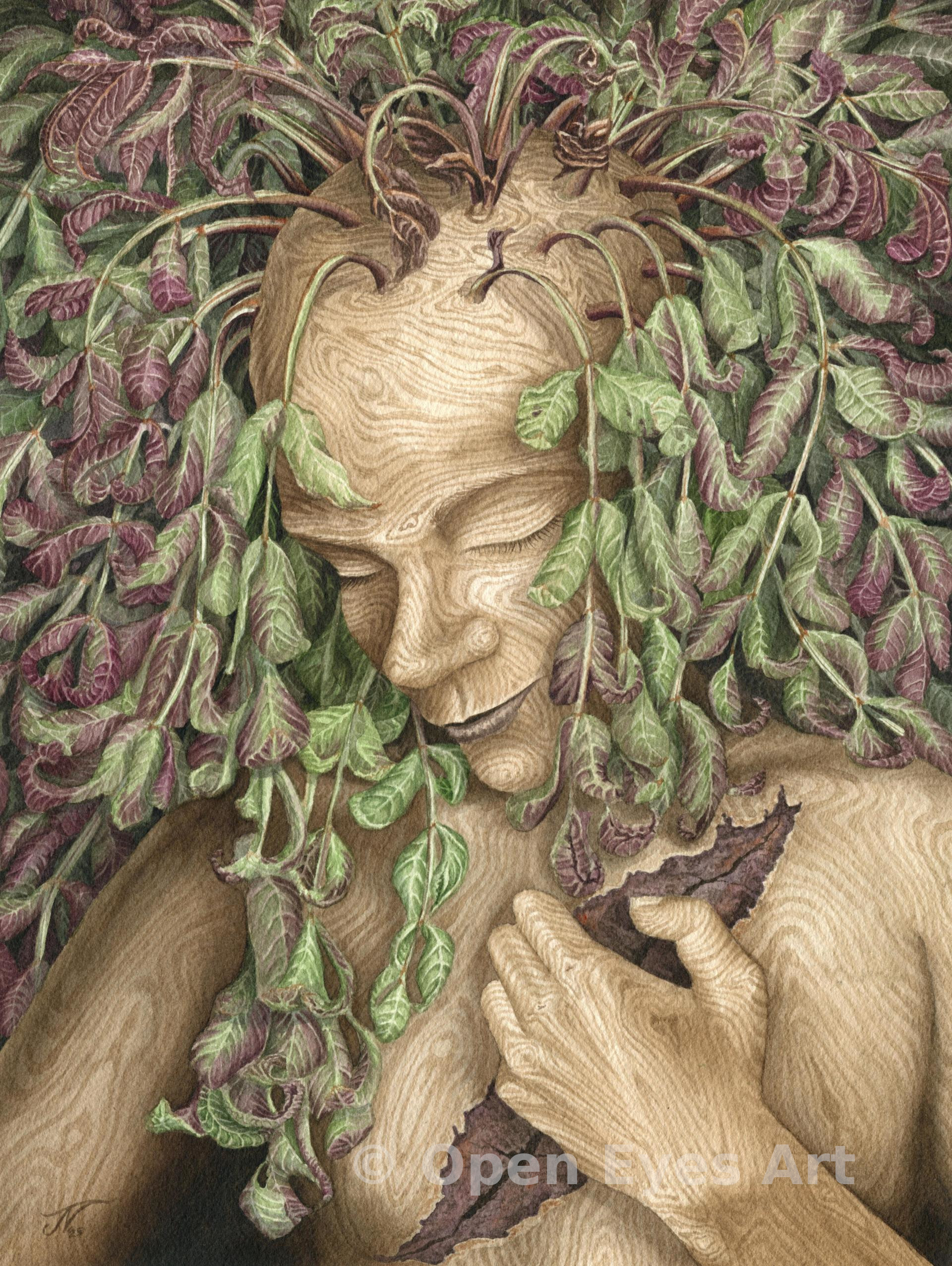
This ash dryad is slowly dying from a fungal disease which has spread widely over Europe in recent decades, greatly diminishing ash trees both in the wild and in cultivations. The fungus was probably introduced to Europe by importing trees from East Asia. It quickly became an invasive species. It causes the treetops and tips of branches to wither and die, and dark lesions to appear on the bark. There is no cure for this disease, the only hope for the continuation of the ash tree is that some of them may be more resilient to this fungus.
Once again, it is us humans disturbing the ecosystem in a scope larger than what we could have imagined, causing devastating effects.
Watercolour painting, ca. 27x36cm, 2024
For sale - price on request
Beech dryad
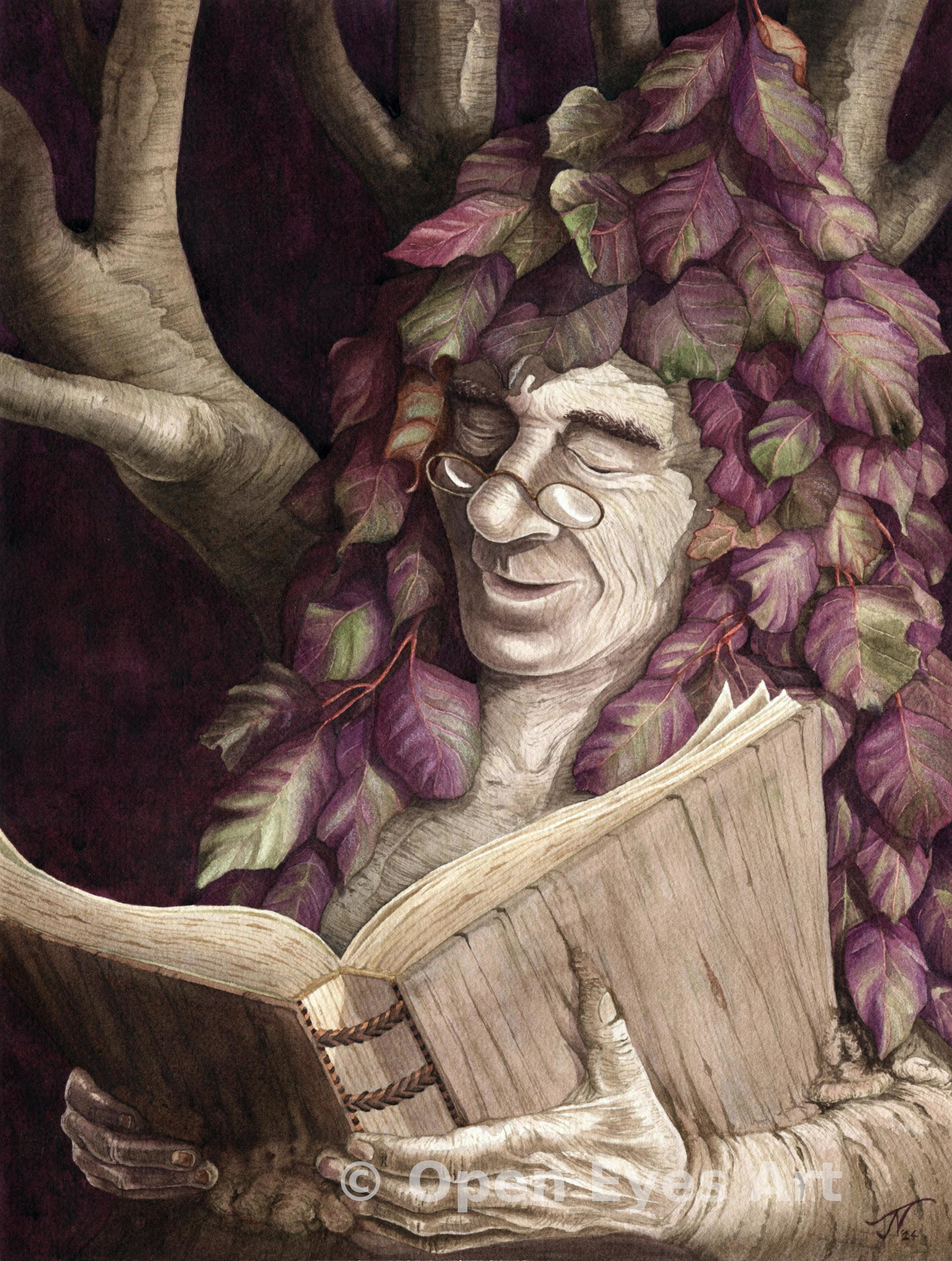
The wood of the beech tree has traditionally been used as plates to carve writing into. Even when parchment became more common, beechwood was still often used for the covers of the book, keeping the connection between beech trees and books alive. In fact, the word "book" derives from the name of the tree, which is more obvious in Swedish (both are called "bok") or in German (beech is "Buche" and book is "Buch"), revealing their proto-Germanic roots.
This here is a very special beech, the copper or purple beech which has unusually purple leaves instead of the typical green leaves of other beeches. You might have seen one of these in a park - in that case I'll have you know that any purple beech you might have encountered is directly related to this 15th century fellow. The purple beech is a mutation and from this one mutation in the Possenwald in what is Germany today, all the other purple beeches have been bred and planted in parks and gardens around Europe.
Watercolour painting, ca. 27x36cm, 2024
For sale - price on request
Linden dryad
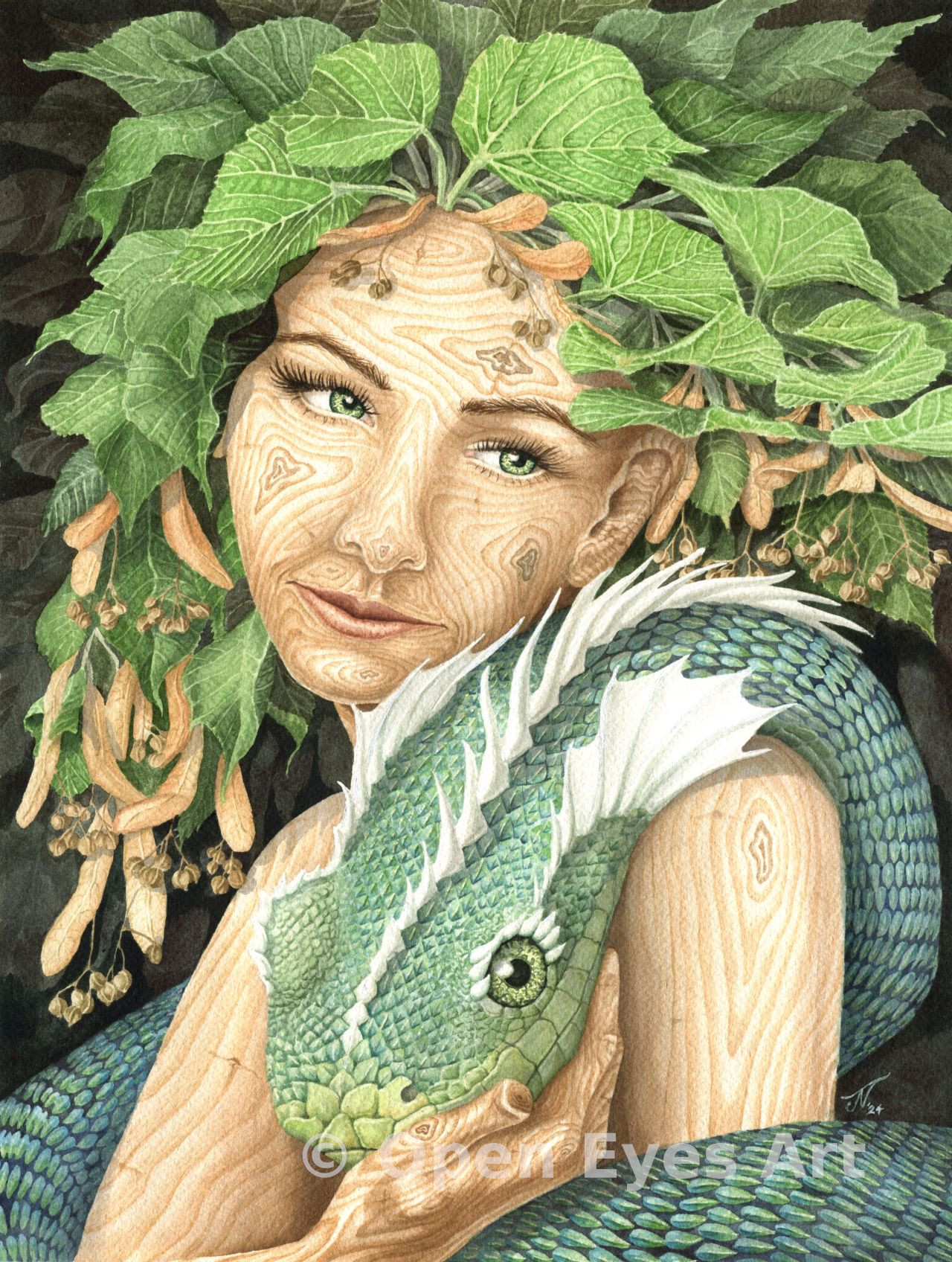
According to Swedish folklore, the lindworm lives in the forest, burrowing around the tree roots, and hibernates under a Linden tree during winter. Of course the linden dryad welcomes her friend and takes good care of the lindworm.
Linden (or lime) trees are amazing creatures that can live forever, always growing new trees from the roots of the older trees.
Watercolour painting, ca. 27x36cm, 2024
For sale - price on request
Tall och tallticka - dryad
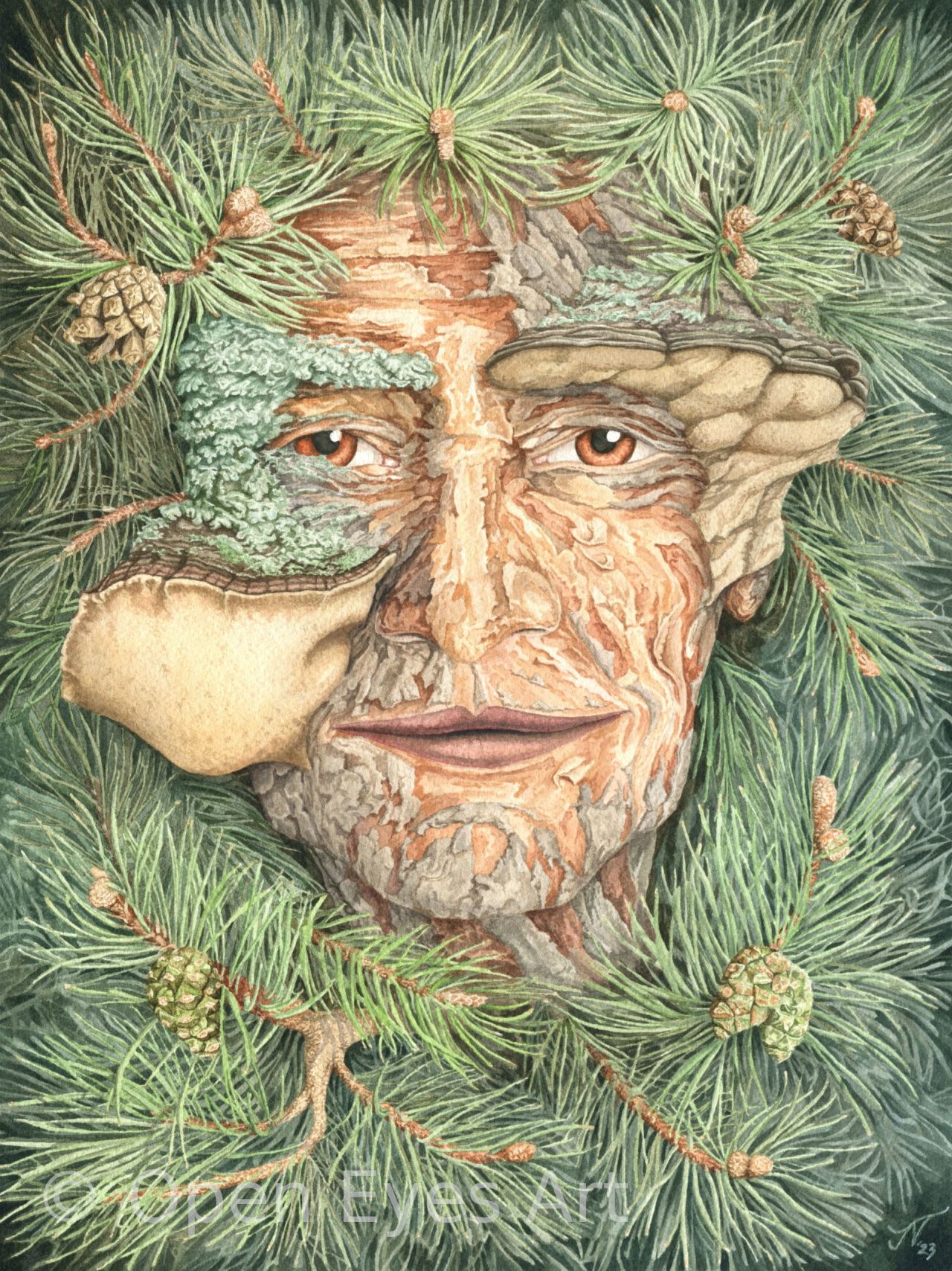
On pine trees, the sight of a fungal growth in form of Phellinus Pini, or tallticka in Swedish, is a good sign of a healthy forest ecosystem. The fungus is classified as Near Threatened and can be found in old growth forests.
This dryad proudly carries Phellinus Pini like an old friend. In fact, the fungus lives inside the tree for decades before the fruit body shows itself on the outside. The fungus does not kill the pine, instead they live together for a long time.
Watercolour painting, ca. 27x36cm, 2023
For sale - price on request
Mycorrhizal fungi dryad

This dryad is inspired by mycorrhizal fungi, fungi that connect to tree roots to share nutrients and connect the forest into a complex network. These networks are invisible to us, tiny mycelia in the soil under our feet - all we usually see are the mushrooms, the fruit bodies of the fungi that come up in autumn or when the conditions are right. Yet what we don't see is a vital part of the ecosystem and contributes to the resilience of a forest as a whole and individual trees that connect to each other.
Inspired by the research of Suzanne Simard.
Watercolour painting, ca. 27x36cm, 2023
For sale - price on request
Banyan Dryad, or: Little human, you have so much left to learn
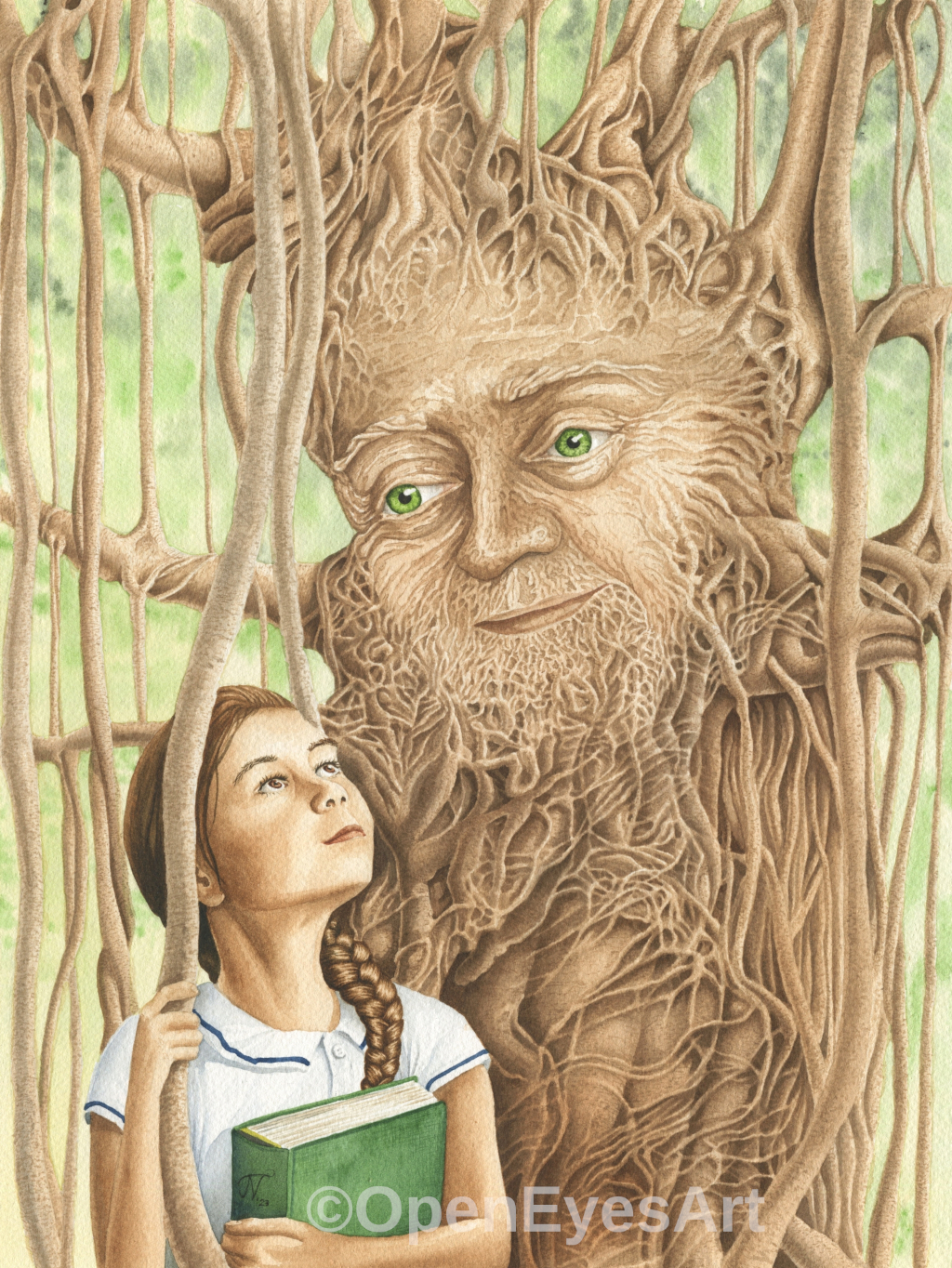
Banyan trees can grow very old as they spread with shoots coming down from the branches and rooting in the earth. An old banyan tree provides shade and shelter and may be used as a gathering point, for merchants, villagers - and school classes. When I think of a class of school children studying under a banyan tree, I imagine the tree provides much more than shelter. The tree becomes the teacher, the wise old banyan dryad teaching children the way of life.
I imagine if we listen to the banyan's teaching, we would learn to respect nature, how to live together with the trees, how to be a part of the natural ecosystem. We have much left to learn from these wise trees
Watercolour painting, ca. 27x36cm, 2023
For sale - price on request
Wolf tree dryad

Old, gnarly trees in a forest of younger, straight growing trees are sometimes called wolf trees. They come about when a forest has been cleared in the past, to make space for a pasture or field, but one tree in the pasture was left standing - for its shade or maybe for animal fodder. Standing alone in an open field, the tree grows in all directions, becoming gnarly. When the pasture is later abandoned, younger trees will grow around it, standing tall and straight. The old tree remains, gnarly and often with hollows or growths. Why call it wolf tree? These gnarly trees are not as useful for forestry - they don't provide quality wood, are unpopular from an economic point of view.
Wolves have a long history of being unpopular as well. Feared and hated by farmers because they sometimes hunt farm animals, wolves have been hunted close to extinction. Yet both the wolf tree and the wolves are important for biodiversity. Many insects, birds and mammals make a home in the hollows and bark of the tree. Wolves are key species that keep the herbivore population in check, which in turn enables young trees to grow, beavers to find wood, rivers to flow more naturally.
Yet, wolf hunts continue. This wolf tree dryad is a call to stop endangering biodiversity and protect the wolves.
Watercolour painting, ca. 27x36cm, 2023
For sale - price on request
The Migrant dryad
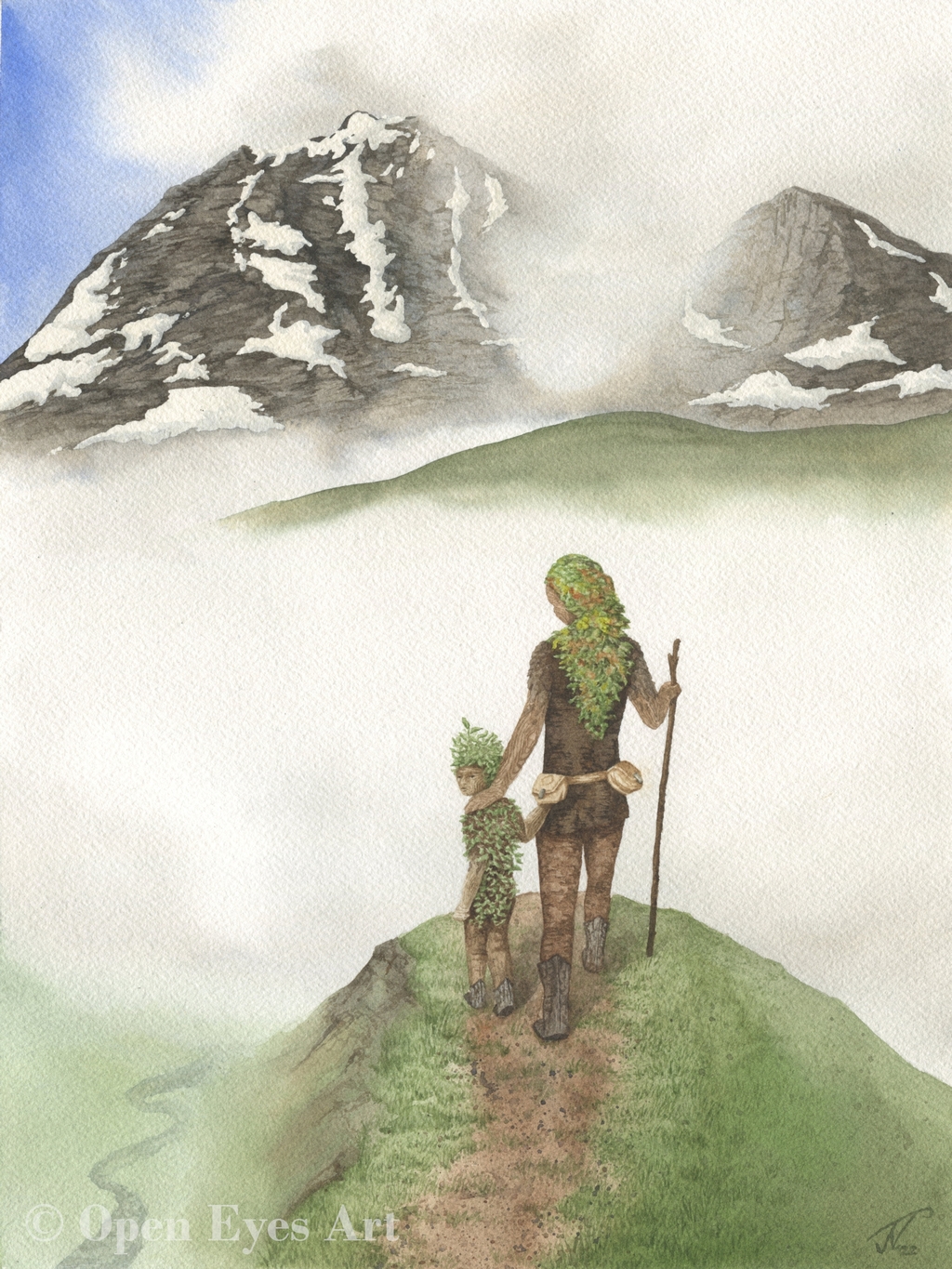
Climate change forces many species out of their usual habitat. Even forests are migrating north and into higher altitudes. Pines, spruce, oaks, maples and many more are trying to find better living conditions, trying to find a new home as their old one becomes too hot or too dry. Some tree species move an average of 1 to 1,5 kilometres a year.
Here is my interpretation of the tree migration. The dryad is guiding a young sapling into new, previously unknown places. The sapling is looking back to where it came from, maybe longing for its family.
Watercolour painting, ca. 30x40cm, 2022
For sale - price on request
Prints available
The Aurora Dryad
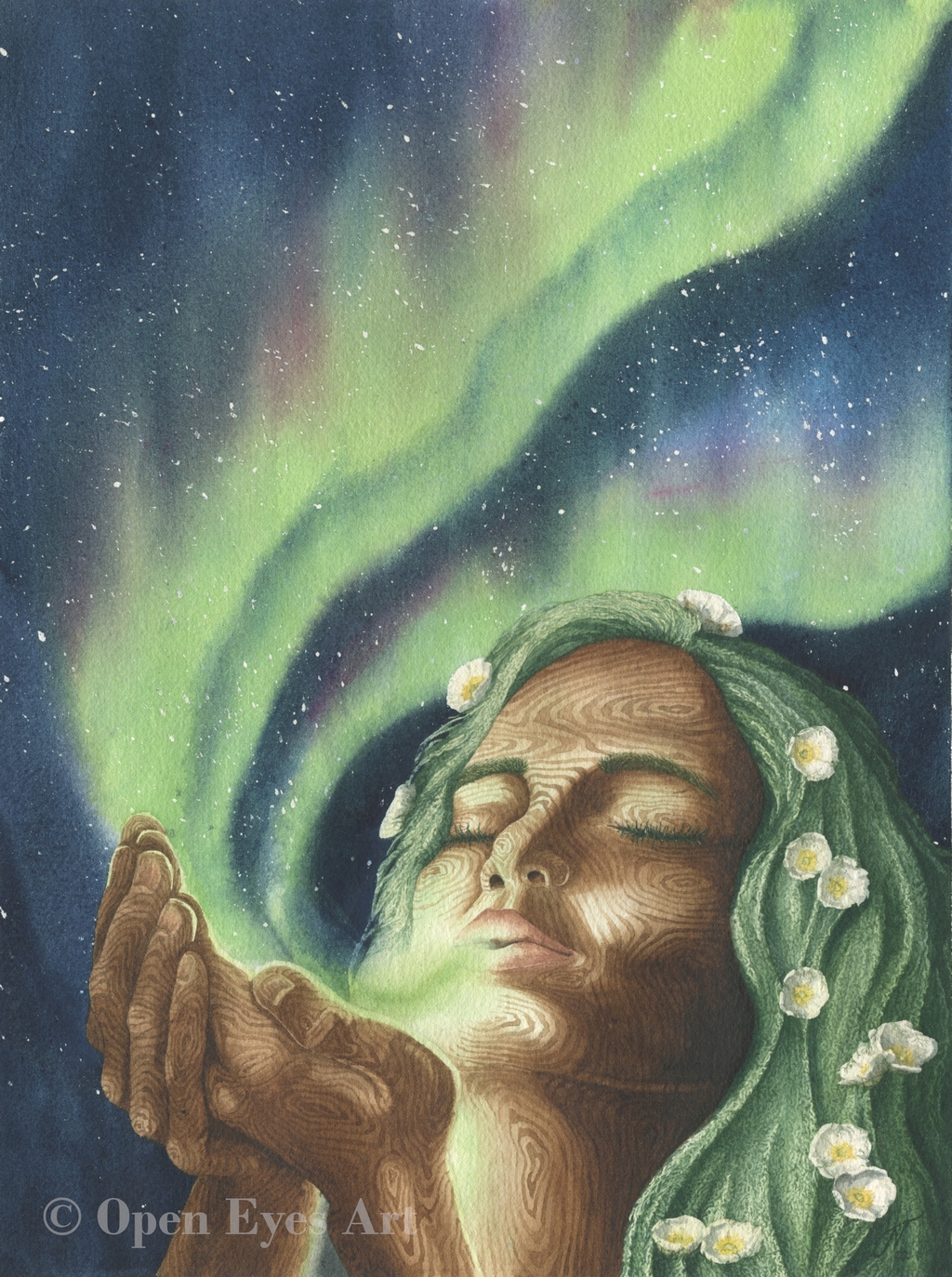
The aurora dryad is a dryad of the North. Her hair is inspired by beard lichen, a hanging kind of lichen that feeds wild animals and reindeer in times of snow. This kind of lichen is very sensitive to air pollution and if you find it growing in nature, it means the air in the area is very clean.
In her hair she wears glacier buttercups, a hardy flower that can be found in the hightest mountain regions in Scandinavia.
And of course the aurora borealis, or northern lights, a phenomenon that you can best observe in the far North.
Watercolour painting, ca. 30x40cm, 2022
For sale - price on request
Prints available
The Dryad with the Cherry Earring
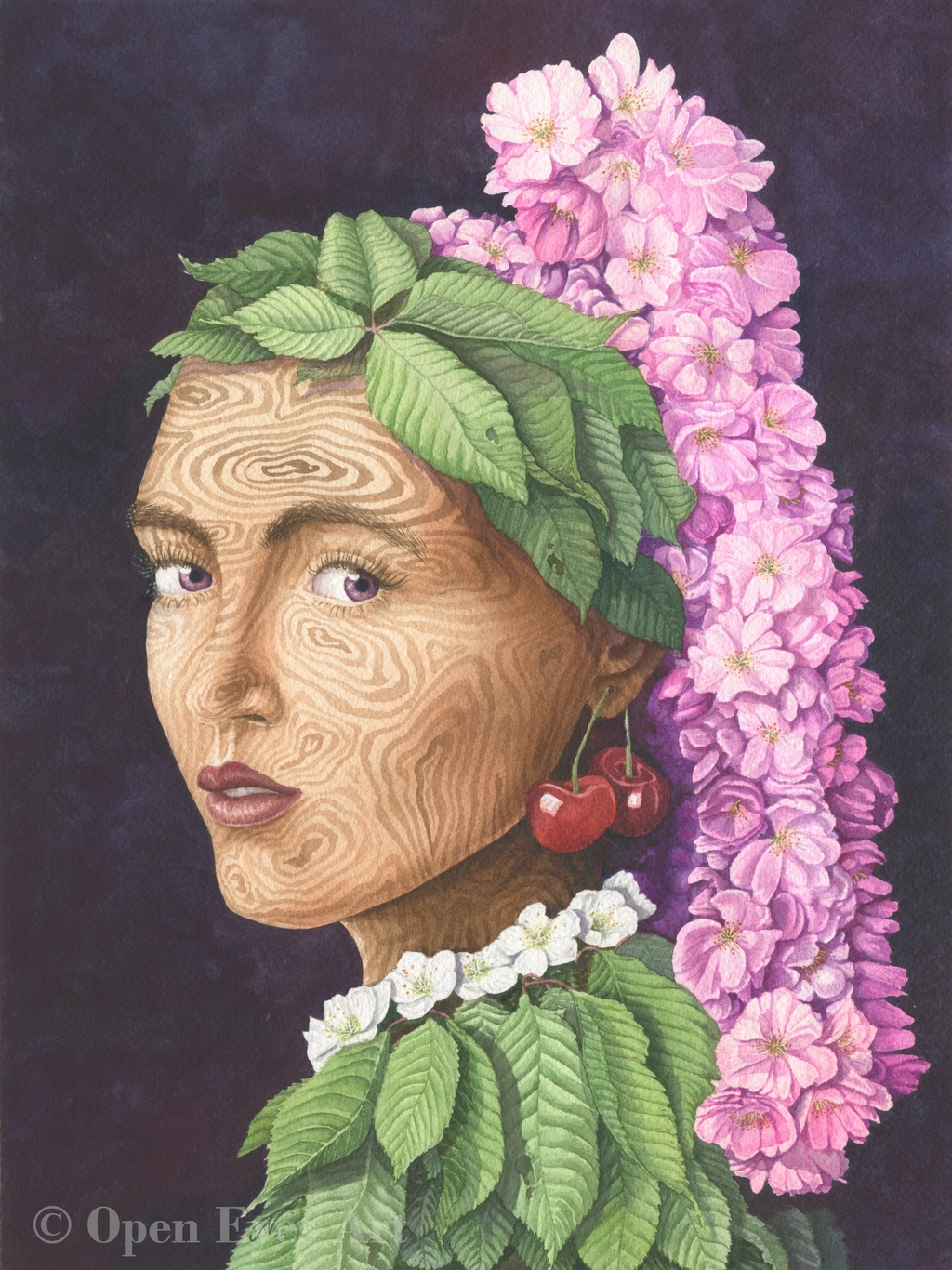
Inspired by Vermeer's ”Girl with a Pearl Earring” (1665), the cherry dryads seems just as mysterious. Cherry trees have a shifting beauty. Most of the year they are unobtrusive, making themselves small – only once a year they show their full potential in bright pink colours.
Watercolour painting, ca. 30x40cm, 2022
For sale - price on request
Prints available
The Maple Dryad
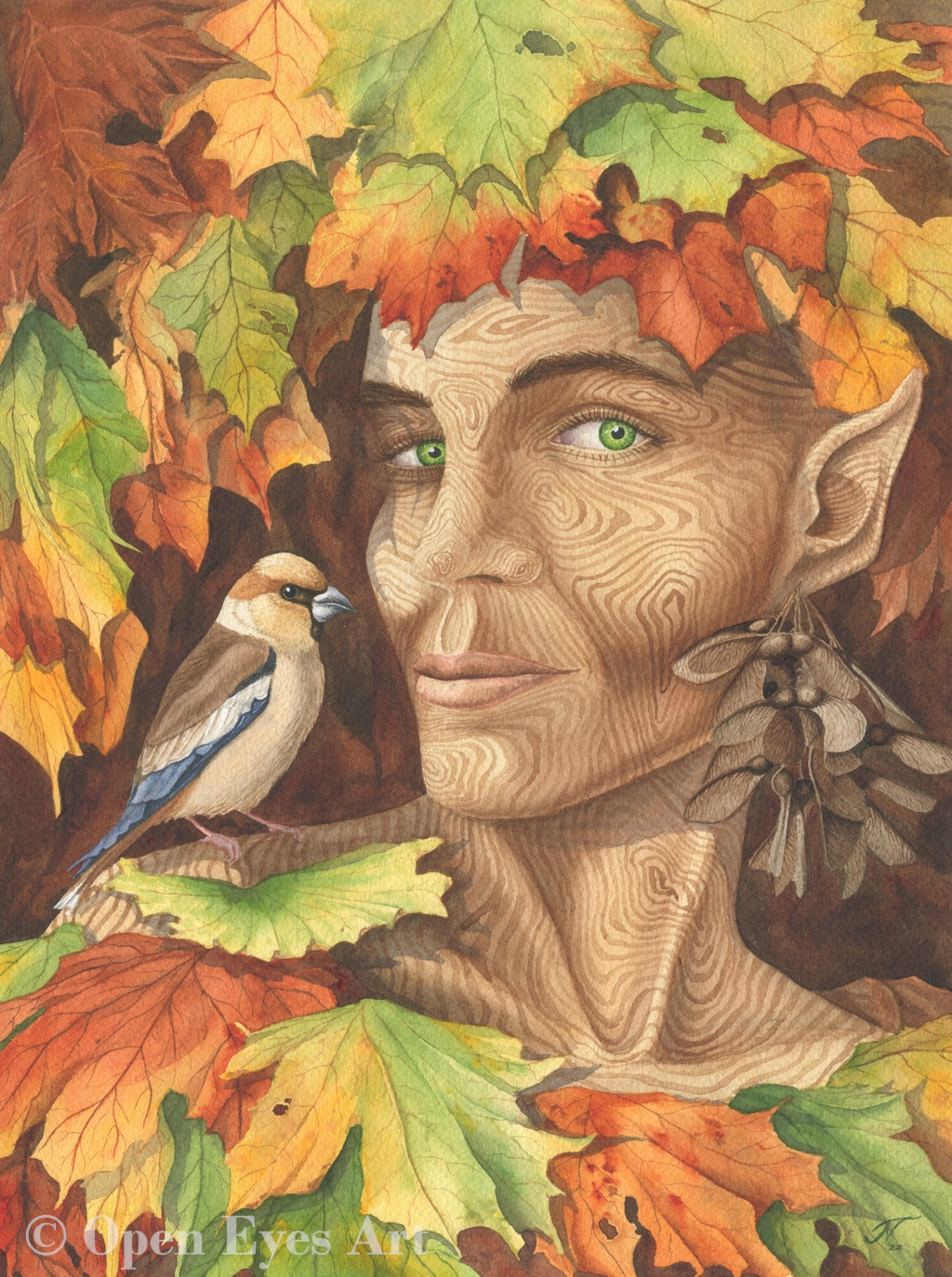
Dryads not only protect the trees of their forest, but also the animals that live here. The maple dryad provides shelter and delicious seeds to one of her good friends, the hawfinch.
Watercolour painting, ca. 30x40cm, 2022
For sale - price on request
Prints available
The Weeping Willow Dryad
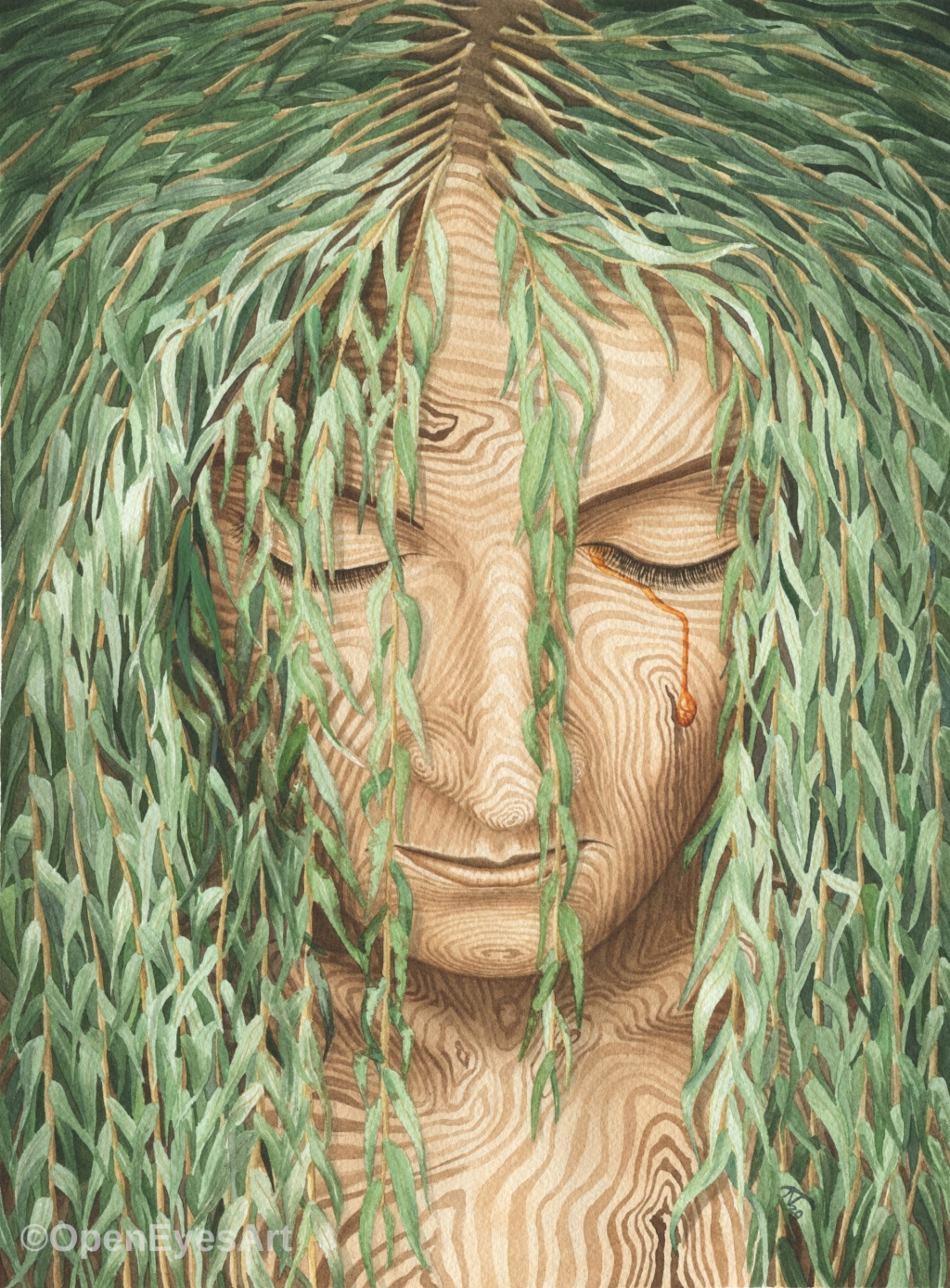
Have you ever wondered what the weeping willow is mourning? Maybe it is the deforestation killing her family, the destruction of nature all around us.
Watercolour painting, ca. 30x40cm, 2020
For sale - price on request
Prints available
The Apple Dryad
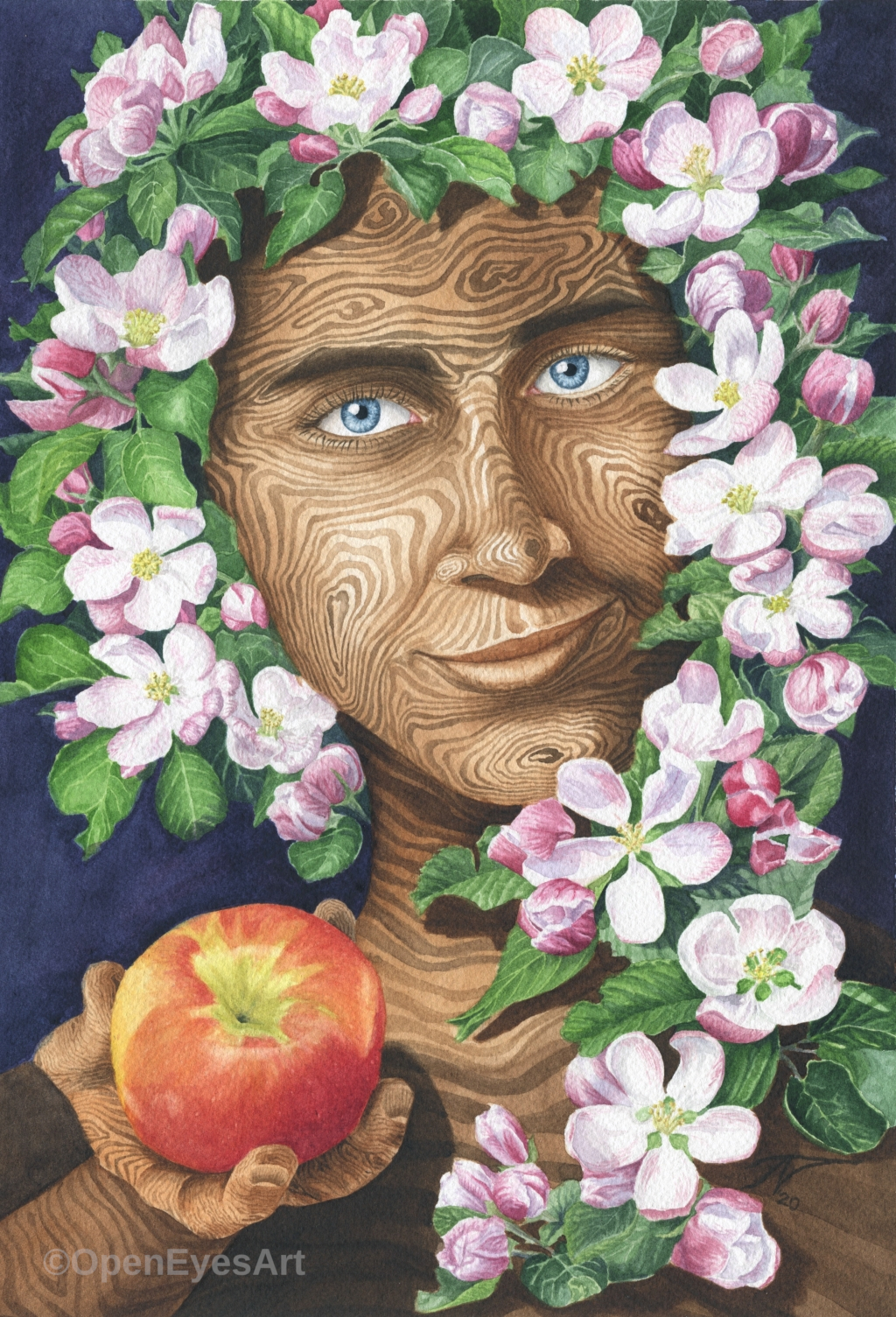
In the beginning, there was a dryad. Then, there was a god. There never was a snake...
Watercolour painting, ca. 30x40cm, 2020
For sale - price on request
Prints available
The Eucalyptus Dryad
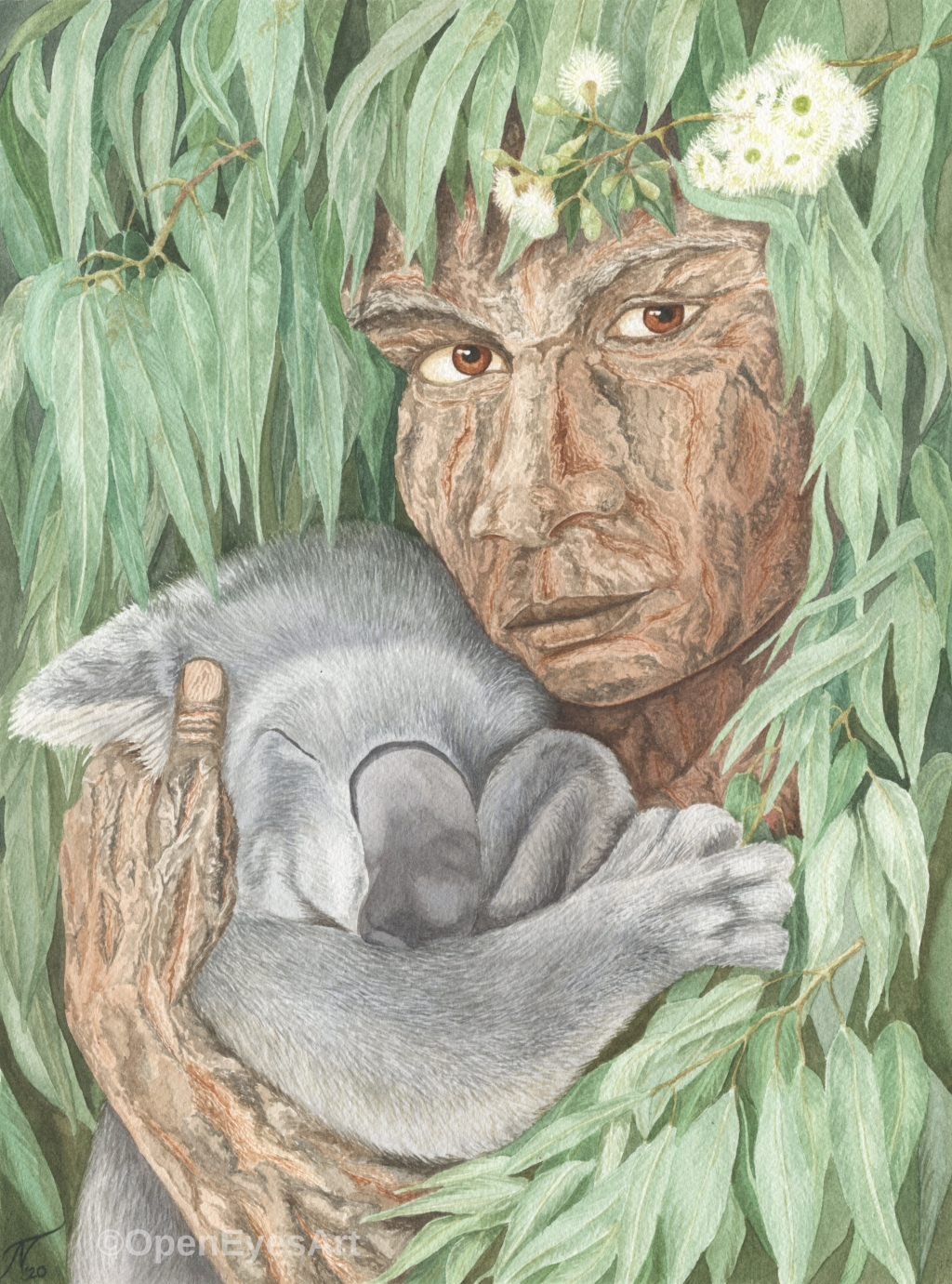
This painting came into being during the devastating Australian wildfires in the beginning of 2020. Eucalyptus dryads are particularly loved by the koalas, who have uniquely evolved to be able to live off the poisonous eucalyptus leaves. Sadly, in the course of the bushfires, entire landscapes have burned and the koalas have lost their habitat. This dryad is a call for action and a warning to us humans.
Watercolour painting, ca. 30x40cm, 2020
For sale - price on request. 30% of the sale will go to WIRES Australian wildlife fund!
Prints available
The Winter Dryad
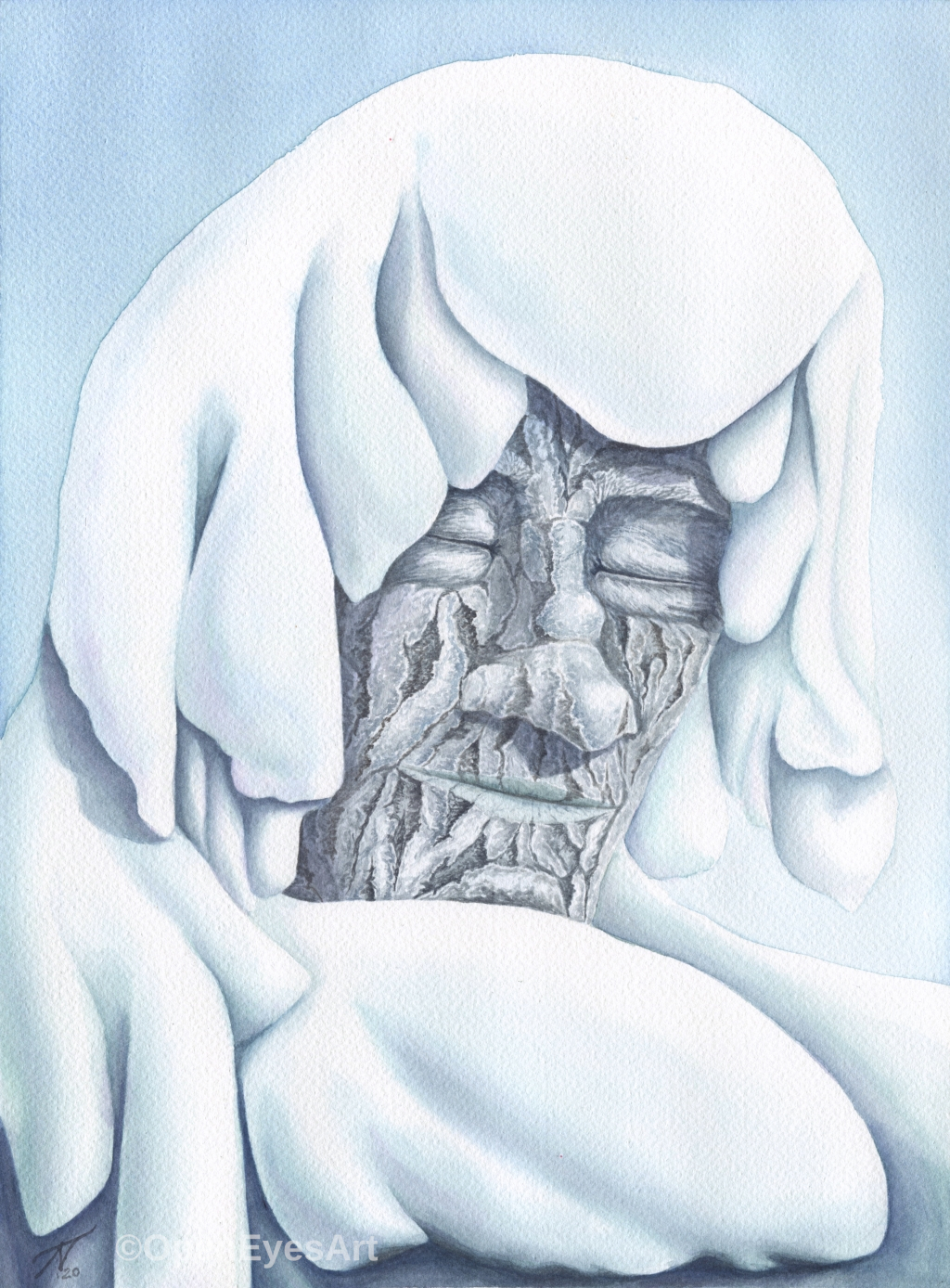
This dryad is inspired by pine trees in the far North, bent down by the heavy load of thick snow. In winter, I imagine, the tree spirits are sleeping.
Watercolour painting, ca. 30x40cm, 2020
For sale - price on request
Prints available
The Chestnut Dryad

This dryad is an old, wizened chestnut in autumn colours, holding in her hands the fruit of her life and promise of the future - the chestnut.
Watercolour painting, ca. 30x40cm, 2019
For sale - price on request
Prints available
The Redwood Dryad
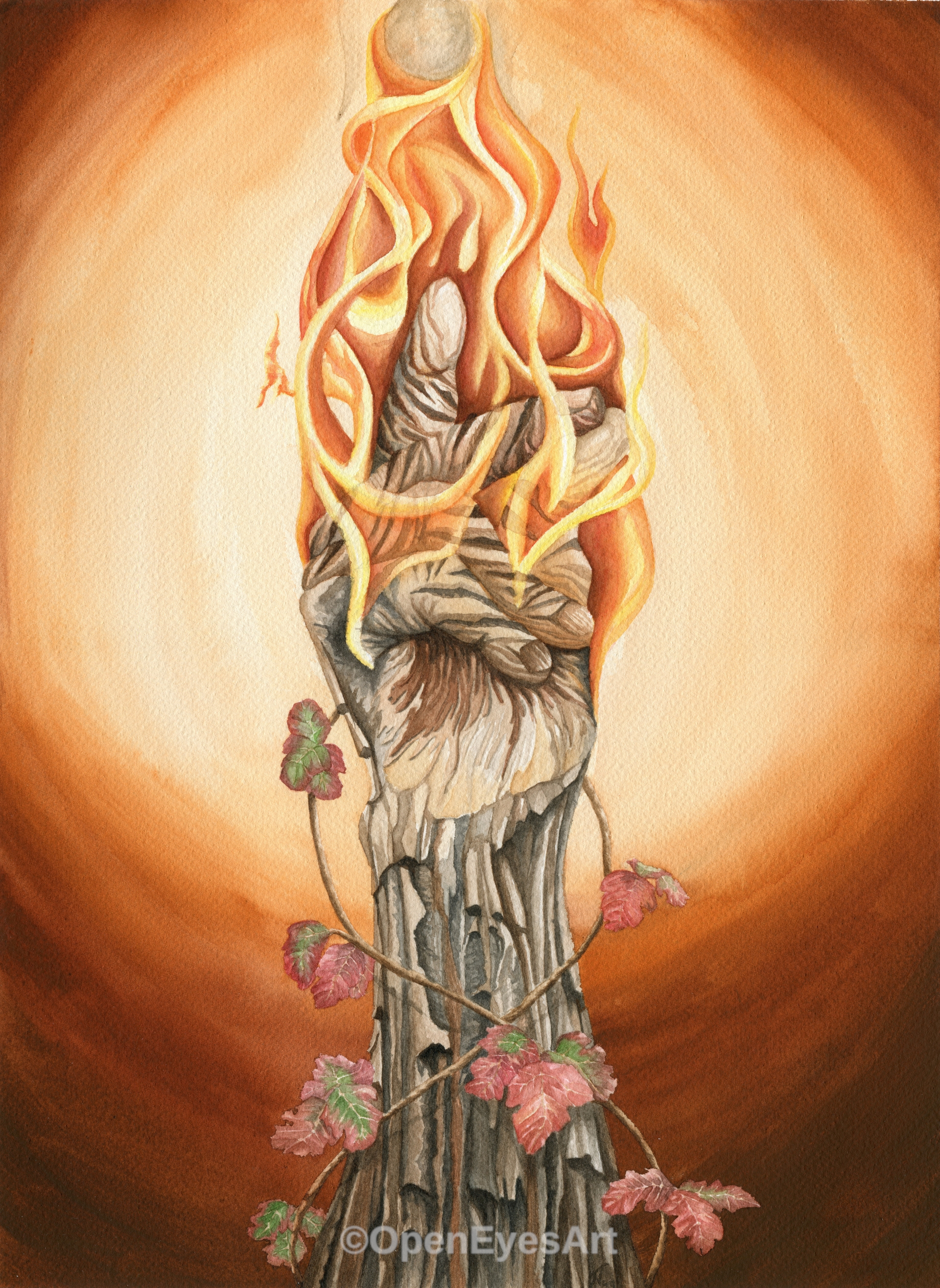
Redwoods, or sequoias, are some of the tallest trees on earth. They are specifically adapted to and actually thrives in forest fires. In the heat of the fire she releases her seeds and the seedlings grow from the fertile ashes.
Watercolour painting, ca. 30x40cm, 2019
For sale - price on request
Prints available
The Birch Dryad
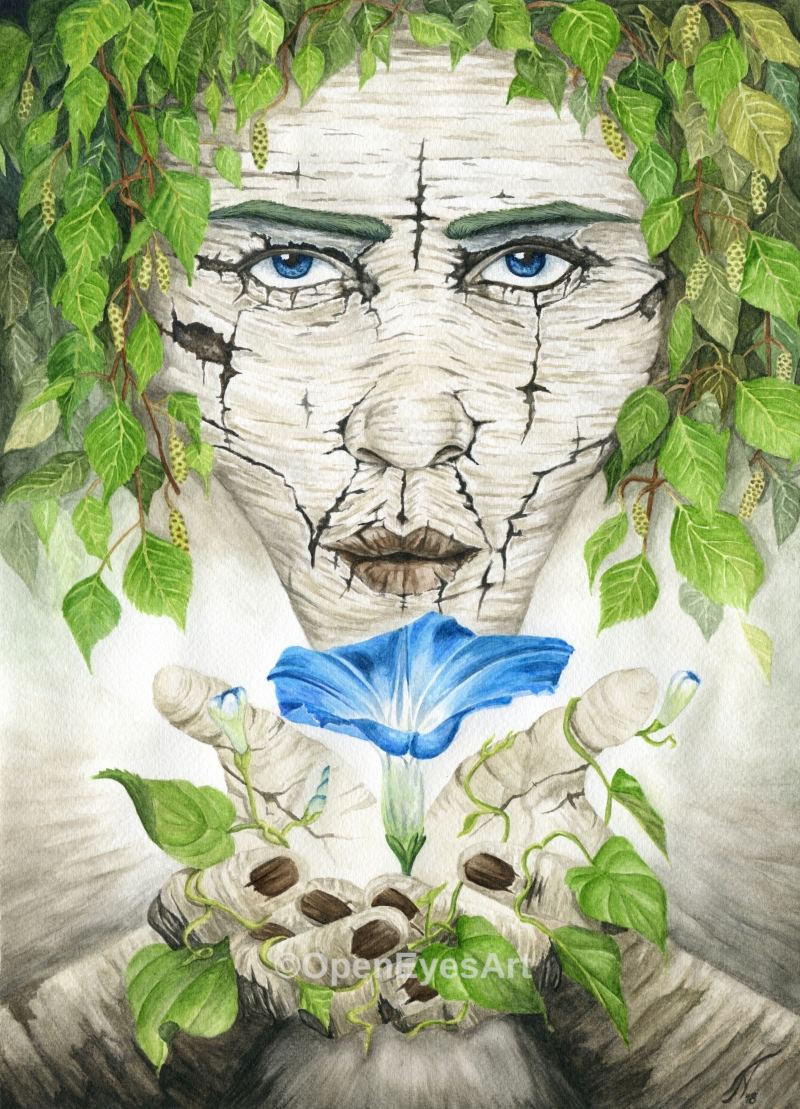
The birch is one of the most common trees in Sweden, so naturally the local tree spirits would be birch dryads, taking care of and giving life to nature.
Watercolour painting, ca. 30x40cm, 2018
For sale - price on request
Prints available
Dryad Mother Oak
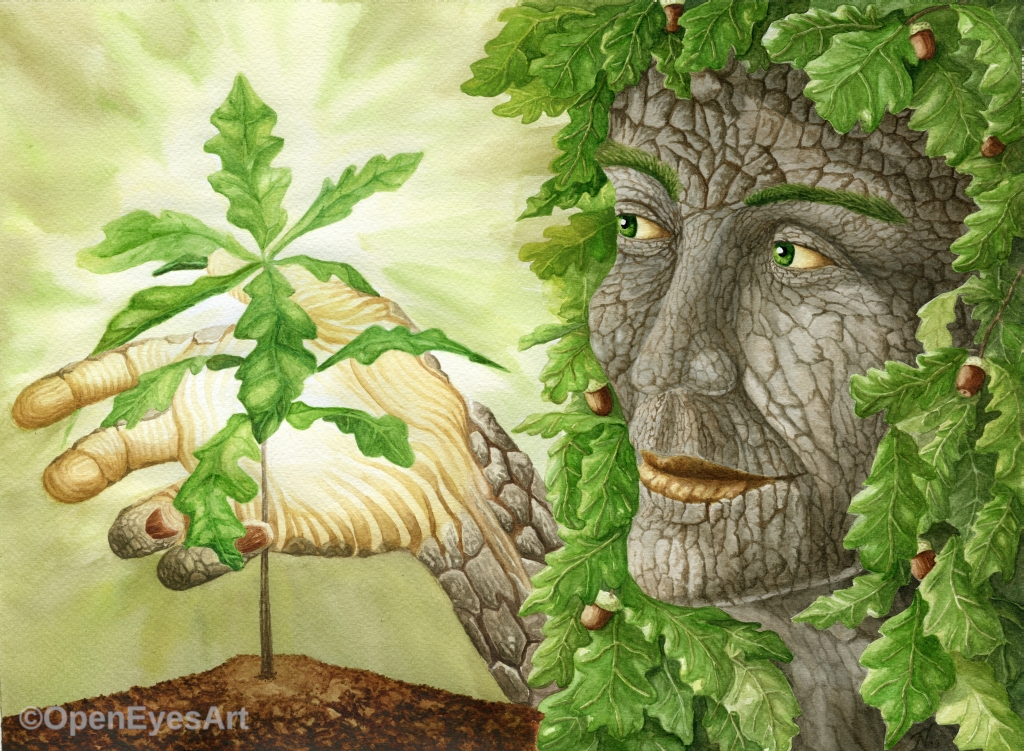
Trees have a tough upbringing. Most seeds, if they are not carried far by the wind or animals, fall in the direct vicinity of the tree and thus the saplings compete against the parent tree for light, water and nutrition. What seems like a disadvantage at first glance has its benefits - the young trees are schooled to grow straight, towards the light that is so much more plentiful in the heights, rather than wasting energy into ineffective directions. They grow slowly and develop a thick, sturdy stem and bark that can withstand storms and parasites, rather than having growth spurts and developing into a brittle tree. They stretch their roots deep into the ground, stand steady and find water even during dry times of the year. It is only when the parent tree dies and falls that the strong children get a chance to grow to full size. Mother Oak, in all her austerity, raises her children to live long and healthy lives.
Watercolour painting, ca. 30x40cm, 2018
For sale - price on request
Prints available
